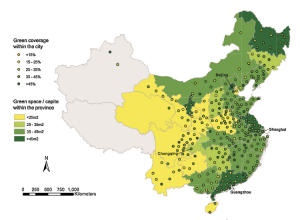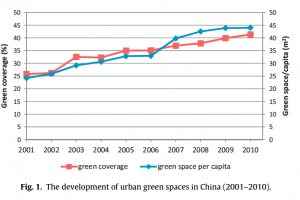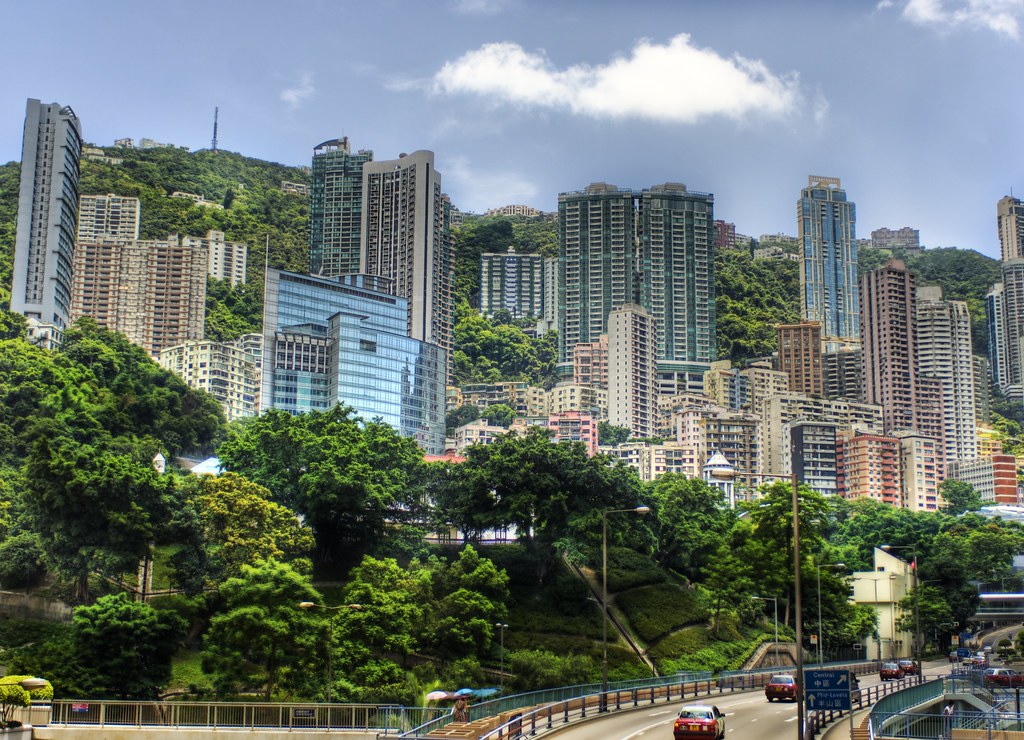Overview of Urban Green Spaces in China
Timeline

Conceptualizing
Green spaces by definition have carried different connotations over time.
Globally, urban green spaces are a relatively young concept. Perspectives from environmental movements changed citizens’ views of green spaces in cities. In China, after economic reform policies post-1949, the urban environment became significant in regards to urban planning (Chen, 2013). The conceptualization of urban green spaces in China grew to encompass not only an urban-centered focus, but also the wider ecological landscape (Chen, 2013).

In the beginning, green spaces were most frequently defined by Chinese citizens as open spaces with natural and public features (Xu et al., 2011). This included public park green space, shelter green space, scenic green spaces, and traffic greenbelts. Recently, the perception of green spaces has expanded to include urban forests, in addition to urban green space gardens (Xu et al., 2011).
Urbanization
Due to urbanization, China was forced to reconsider its urban landscapes and address environmental issues to save natural resources.

China’s urban green space coverage has increased since the beginning stages of urbanization (Chen & Wang, 2013). However, as economic growth accelerates, urban green space coverage decreases due to insufficient greening policies (Chen & Wang, 2013).
In Beijing, natural features of the city and the surrounding mountainous area were gravely threatened as the city developed.
Policy & Implications
Similar to the Confucianist value of emulating successful individuals or processes in order to best gain knowledge, China has shaped its policies on urban green spaces and green cities on global ranking model cities (Pow et al., 2014).
China is trying to reach its “environmental targets by adopting measures and governmental rationalities proven elsewhere” (Pow et al., 2014, p. 134).
This entails adopting a very Westernized view of policy implementation and green cities within themselves. For instance, the creation of these cities and spaces is very much driven by “entrepreneurial/commercial objectives and ideals of ecological modernisation,” a western concept (Pow et al., 2014, p. 134). This may put to the back-burner some important improvements that may not necessarily be economically beneficial, but may have great environmental benefits (Pow et al., 2014).

Although international model cities have achieved many green improvements, these improvements may not necessarily be successful for China (Pow et al., 2014).
For successful policy implementation in Chinese cities, policy adoptions will require consideration of the fact that different cultures and societies may require distinct adaptations to the frameworks used. Policies must be adapted to the specific localities and the wants of the societies within them (Pow et al., 2014). This often involves the mobilization of international planners, builders, and policy experts as well as collaboration from Chinese municipal officers who have referenced other cities’ models (Pow et al, 2014).
Who is affected?
The geographic context of urban green spaces in China is limited to urban, metropolitan areas. Urban environments with natural landscapes have prioritized urban green spaces as natural amenities. The demographics of people facing this environmental issues include the populations of Chinese cities. Chinese cities are largely monoracial (Zhao, 2013). Visit the section on power and privilege to gain insight on the demographic communities affected by urban green space distribution.
Citations
Chen, C. (2013). Planning urban nature: urban green space planning in post-1949 China: Beijing as a representative case study (Doctoral dissertation, Lincoln University). Retrieved from http://researcharchive.lincoln.ac.nz/handle/10182/5707
Chen, W. Y., & Wang, D. T. (2013). Economic development and natural amenity: An econometric analysis of urban green spaces in China. Urban forestry & urban greening, 12(4), 435-442. doi: 10.1016/j.ufug.2013.08.004
Li, M. (1997). Development of green space in Beijing. Ekistics, 64(385-387), 255. Retrieved from http://search.proquest.com/docview/232563402?accountid=10207
Marks, R. (2012). China its environment and history. Plymouth, UK: Rowman & Littlefield Publishers, Inc.
Pow, C., Neo, H. (2014). Modelling Green urbanism in China. Area, 47(2), 132–140, doi:10.1111/area.12128
Xu, X., Duan, X., Sun, H. et al. (2011) Green space changes and planning in the capital region of China. Environmental management, 47(3), Environmental Management 47: 456-467 doi:10.1007/s00267-011-9626-3
Zhao, P. (2013). The impact of urban sprawl on social segregation in Beijing and a limited role for spatial planning. Tijdschrift voor economische en sociale geografie, 104(5), 571-587. doi: 10.1111/tesg.12030
Image Citation
Trey Ratcliff (Photographer). (2008 July 28). Living in Hong Kong. Retrieved from https://www.flickr.com/photos/stuckincustoms/2671606666
